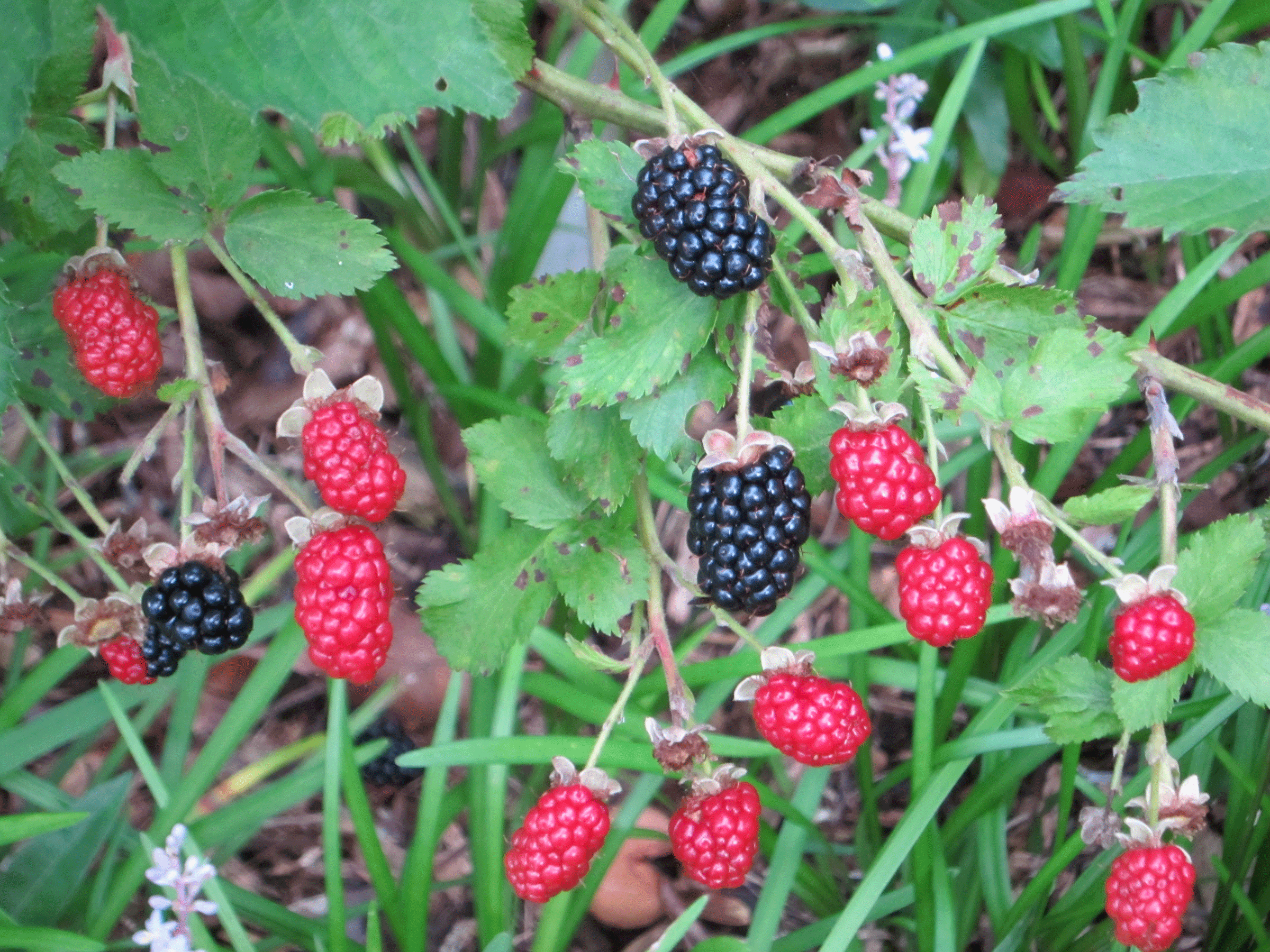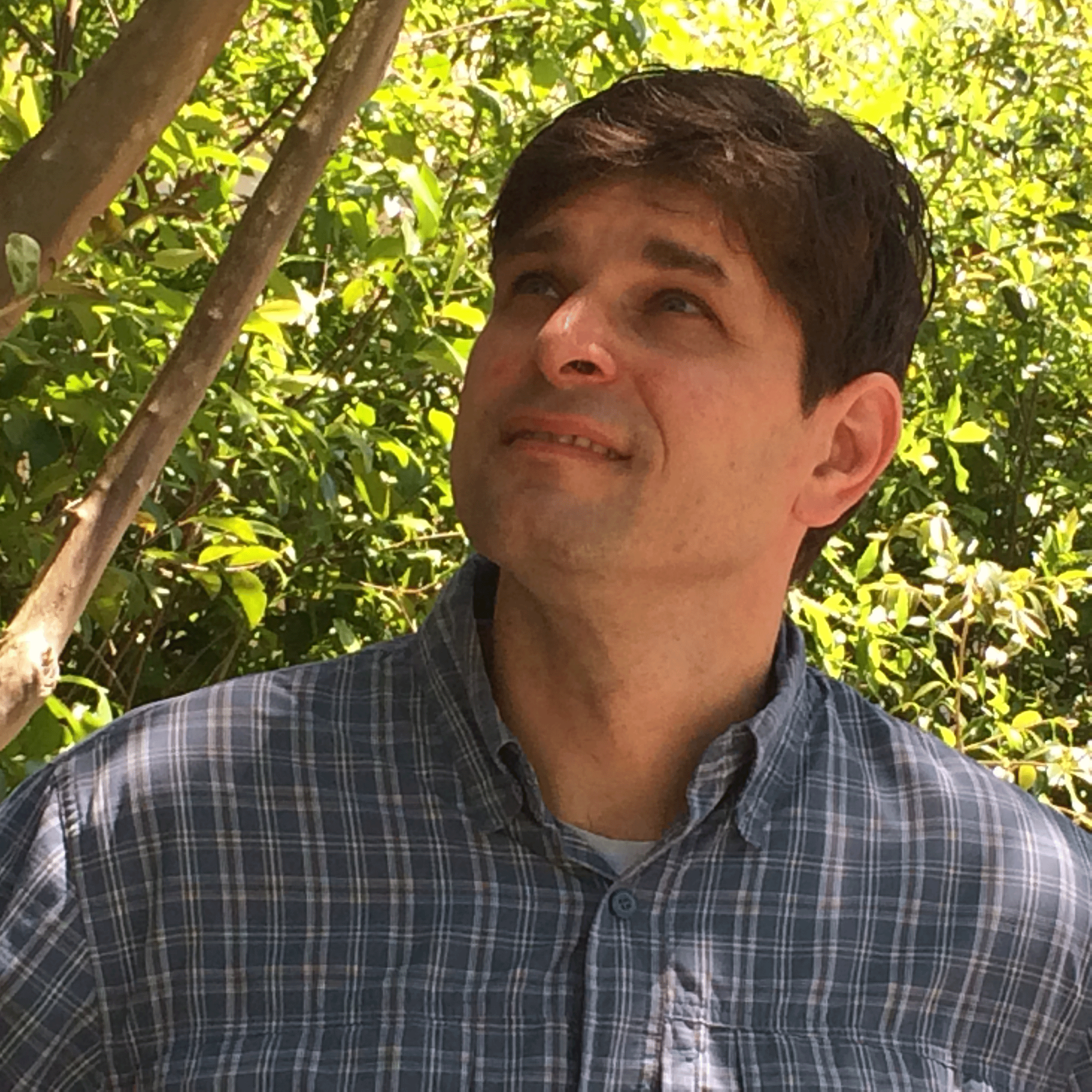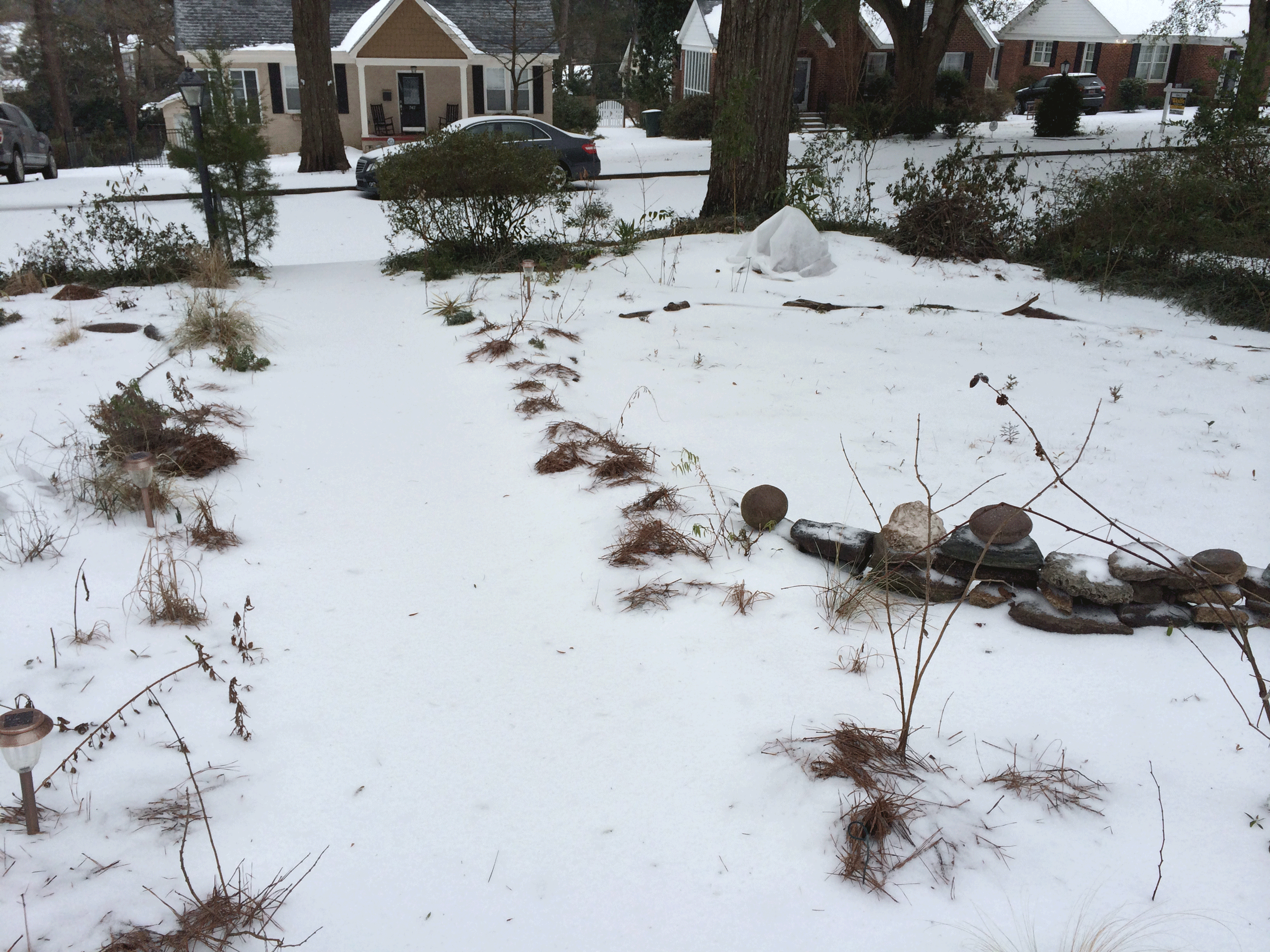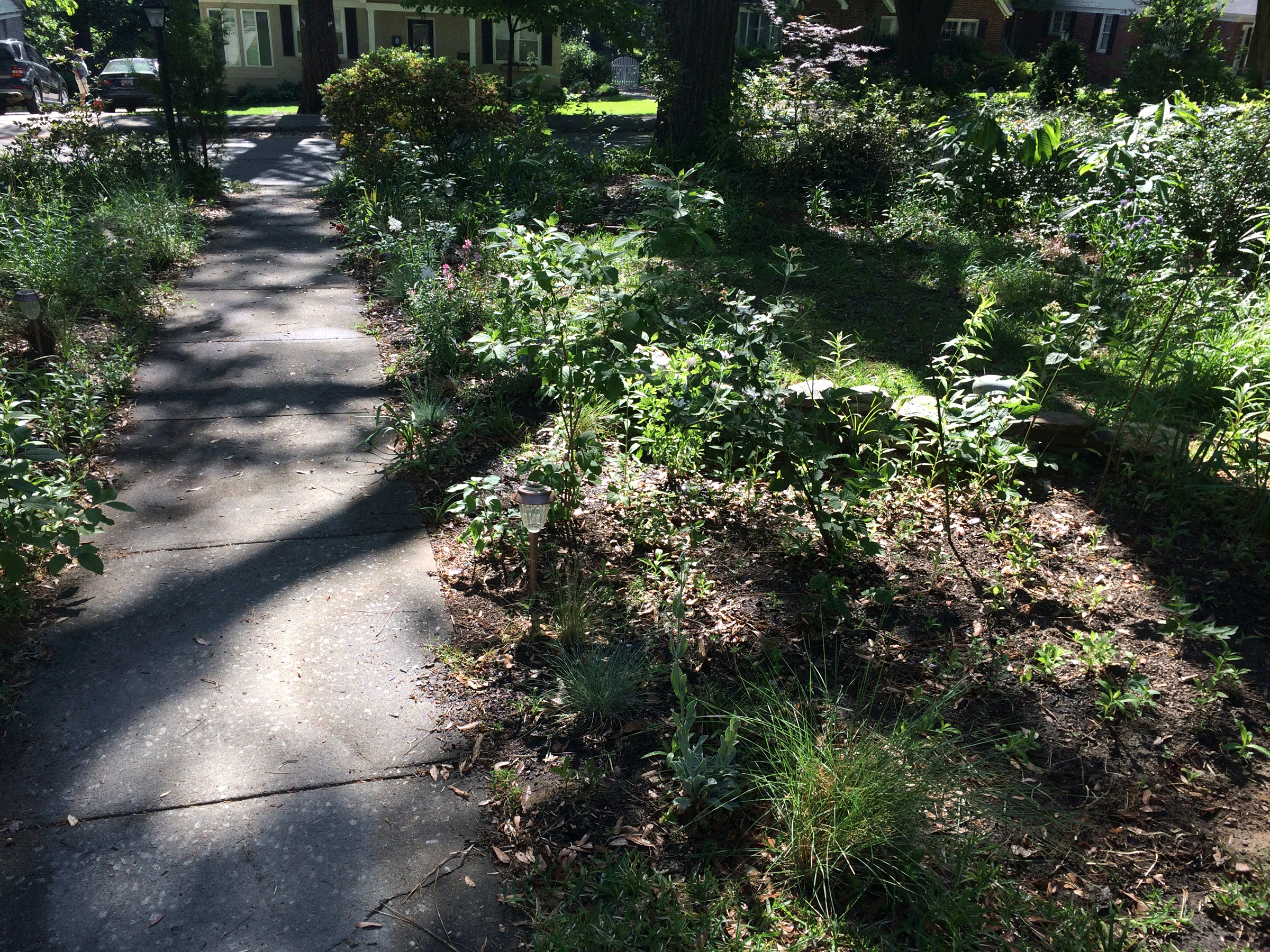Gardening for Climate Change
Air Date: Week of May 9, 2014

Jim Barilla and his family eat from the garden they keep in their own backyard (photo: Jim Barilla)
From vicious drought to terrible storms, climate change is affecting people throughout the world. Writer Jim Barilla sees that climate change is being felt in his own urban garden in South Carolina. He tells host Steve Curwood how climate disruption has changed his gardening practice.
Transcript
CURWOOD: The White House has just released its third National Climate Assessment showing that every region of the country is already affected. Higher temperatures, rising sea-levels, more intense storms and wildfires and huge swings in temperatures are a reality, and we no longer know what's normal. All this climate disruption affects just about every way we live, including how we garden. Author Jim Barilla recently wrote an essay in the New York Times called, Gar-dening for Climate Change. So we called him up to get some ideas.
BARILLA: For me, climate change up until recently seemed theoretical and futuristic and really kind of disconnected from what I was doing on the ground locally in my own yard. But recently, I've started to see tangible changes that make me question whether this is kind of the new nor-mal. This winter I think the thing that got me really thinking about this was the experience of the polar vortex in which we had successive waves of very unusual cold followed by sort of normal warmth. And observing the impact that that had on plants and insects and other creatures that live in our yard was disconcerting and had me sort of out there putting frost blankets over every-thing one week and pulling them off and watching things come into bloom only to watch them freeze – it was a whipsaw of weather back and forth here.

Jim Barilla in his garden (photo: Nicola Waldron)
CURWOOD: So how do you think climate change is affecting your practice of gardening? What do you do different in the garden now?
BARILLA: Well, I think that's an open question, and I'm still trying to figure that out. What's intriguing to me is that, I think, once you sort of recognize that climate change is going to have a tangible kind of effect on your practice in the yard, then you start to think about those pragmatic questions. Well, what am I going to plant, when am I going to plant, what can live here?
One thing that was interesting to me, and this happened somewhat by happenstance, is that I had planted about 10 different cultivars of blueberries in our yard. These are adapted to different cli-mate zones, so some of these have been developed to grow well, for example, in the mid-Atlantic states, others were developed to grow well in Florida, and really what that means is that they have different chilling requirements. They require a period of cold weather to reset their internal clock and tell them when to bloom. The ones with low-chilling requirements will come into bloom relatively early, the ones the higher chilling requirement will come into bloom later.
What that meant this year was that the cultivars developed for Florida were coming into bloom in early January, and just getting hammered by the freezing weather. The ones that were developed for more northerly climate actually came through pretty well. So we now have fruit on the nor-therly varieties, the southern varieties don't have much this year, and I think that might be what I'm thinking in terms of is planting a much broader spectrum of species and really trying to en-courage that kind of local diversity on a microcosm level, to think of the yard as a microcosm, but also as a connecting the small yard to the continental and the global kind of questions of spe-cies diversity.
CURWOOD: Now, in your essay, your recent essay, you used a phrase "extreme gardening" to describe what you're doing. What do you mean by that?
BARILLA: Well, to me, what that means is, again, I'm planting a lot more species, a lot of more different things, and also I think, challenging the notion of what belongs where. Typically, if you're going to create wildlife habitat, one of the things you're encouraged to do is to add a lot more native species to the landscape, and that's certainly something that I've done here. But it also strikes me that if something as fundamental as the climate is changing, then that has deep implications for what we consider native and non-native and what can live in various environ-ments, and one way I think to avoid despairing about what's happening is to think, well, what can I do to help the species survive? And so this plant may not be native here, but at the same time, it's not invasive, is it possible I could encourage it to live here, what could live on it, are there communities of species that could inhabit this urban environment and make it a more diverse place, bearing in mind that what we do in the city might not be what we'd want to do in Yellow-stone National Park. The city is already a highly mediated environment, the soils are different, the temperatures are already different, so we have a kind of place where we can experiment with what's going to work in the future, and to me there are some exciting possibilities along those lines.

The backyard in the depths of winter (photo: Jim Barilla)
CURWOOD: Jim, what do you think of the term, invasive species?
BARILLA: What I would like to see us do is have a more nuanced approach to how we label species. "Invasive" is something I think we can distinguish from "non-native", so I think we can consider them on a species by species approach, and we can distinguish from something like the honeybee, which is a non-native species, very important ecologically as well as agriculturally in our environment. If we use the term non-native, we can sort of think, well, it may be non-native, but it may actually be beneficial or it may not be doing us any harm, or doing the environment any harm.

The backyard garden now (photo: Jim Barilla)
CURWOOD: John Holdren is the science advisor to President Obama, and he says he prefers the term "climate disruption" to climate change or global warming. What do you think about that?
BARILLA: Well, it is a disruption to business as usual. This winter, I sort of found myself, like the plants and the bees and the other creatures in the yard, I was sort of thinking, this is clearly a disruption. This is clearly bewildering. What's been interesting to me in the aftermath is to see, well, the impact at least in the short term, plants have come back...it isn't apocalyptic yet, and I think there's a lot of work to be done to make sure that it doesn't become a sort of apocalyptic scenario and remains a disruption so I think we need to figure out how we can embrace and guide that change that becomes as minor a disruption to life as we know it as possible.

Bees thrive on goldenrod (photo: Jim Barilla)
CURWOOD: Jim Barilla is a writer whose new book My Backyard Jungle: The Adventures of an Urban Wildlife Lover Who Turned His Yard into Habitat and Learned to Live with It. Thanks for joining us, Jim.
BARILLA: Thanks. It's been great. Thank you very much for having me.
Links
Living on Earth wants to hear from you!
Living on Earth
62 Calef Highway, Suite 212
Lee, NH 03861
Telephone: 617-287-4121
E-mail: comments@loe.org
Newsletter [Click here]
Donate to Living on Earth!
Living on Earth is an independent media program and relies entirely on contributions from listeners and institutions supporting public service. Please donate now to preserve an independent environmental voice.
NewsletterLiving on Earth offers a weekly delivery of the show's rundown to your mailbox. Sign up for our newsletter today!
 Sailors For The Sea: Be the change you want to sea.
Sailors For The Sea: Be the change you want to sea.
 The Grantham Foundation for the Protection of the Environment: Committed to protecting and improving the health of the global environment.
The Grantham Foundation for the Protection of the Environment: Committed to protecting and improving the health of the global environment.
 Contribute to Living on Earth and receive, as our gift to you, an archival print of one of Mark Seth Lender's extraordinary wildlife photographs. Follow the link to see Mark's current collection of photographs.
Contribute to Living on Earth and receive, as our gift to you, an archival print of one of Mark Seth Lender's extraordinary wildlife photographs. Follow the link to see Mark's current collection of photographs.
 Buy a signed copy of Mark Seth Lender's book Smeagull the Seagull & support Living on Earth
Buy a signed copy of Mark Seth Lender's book Smeagull the Seagull & support Living on Earth

